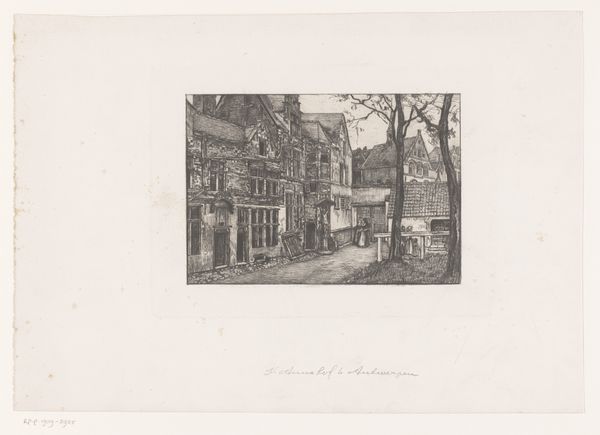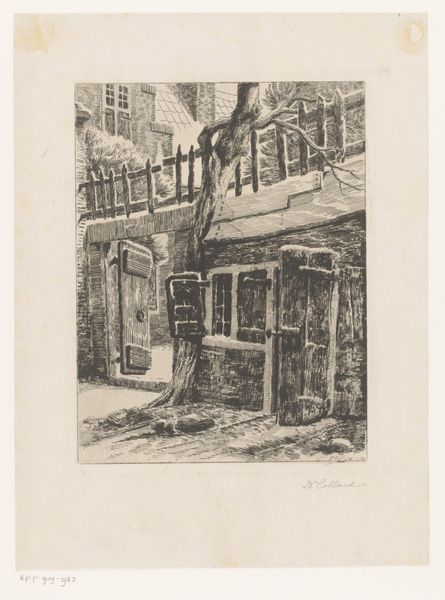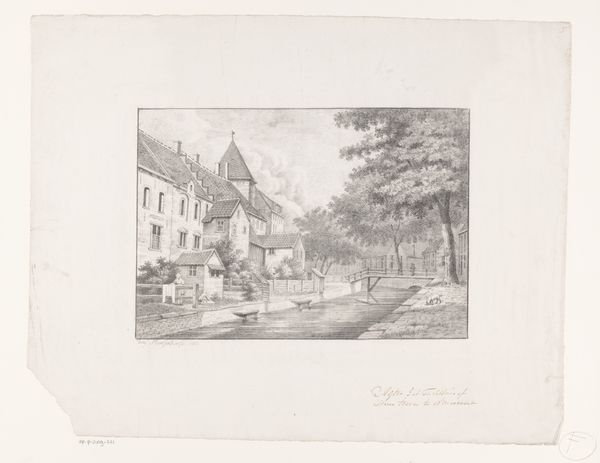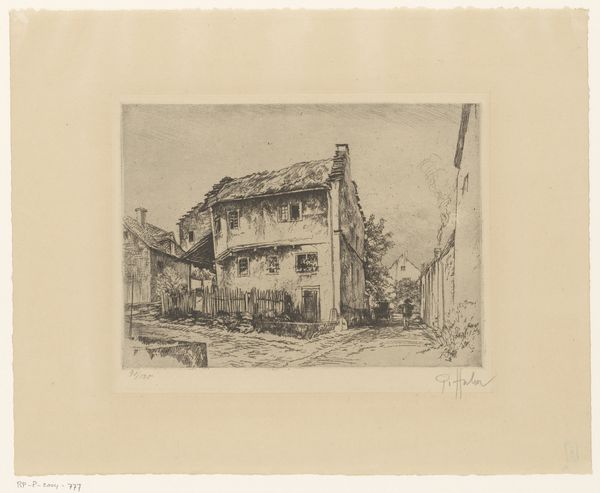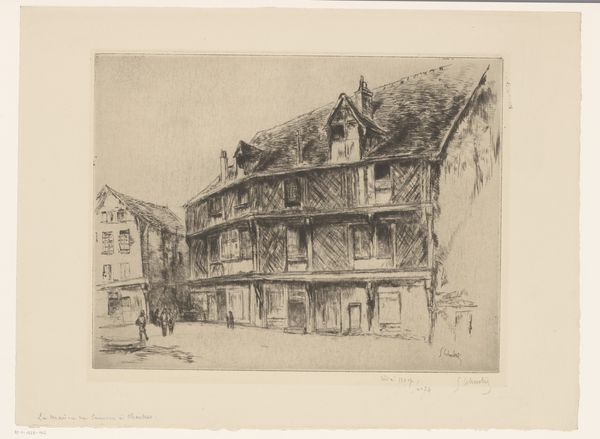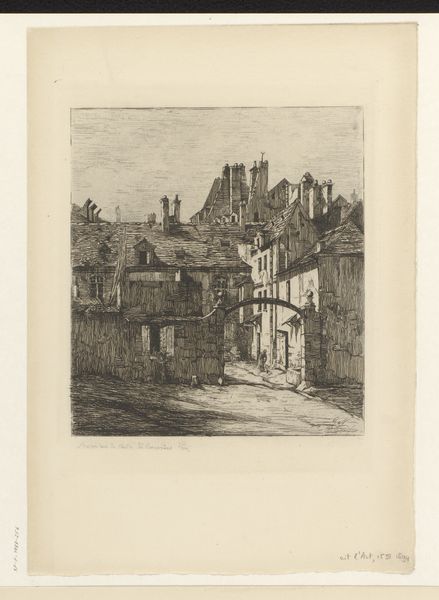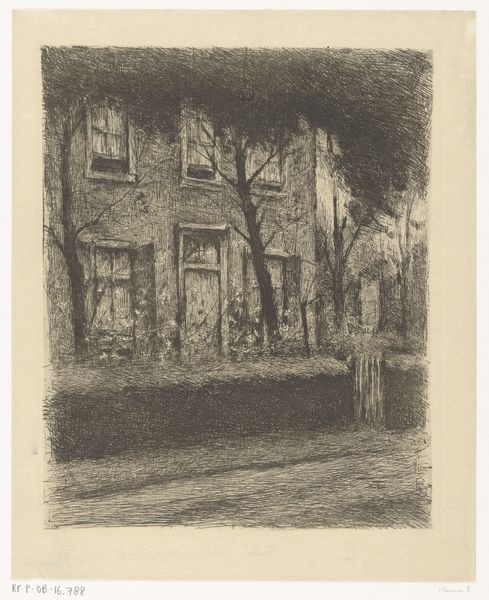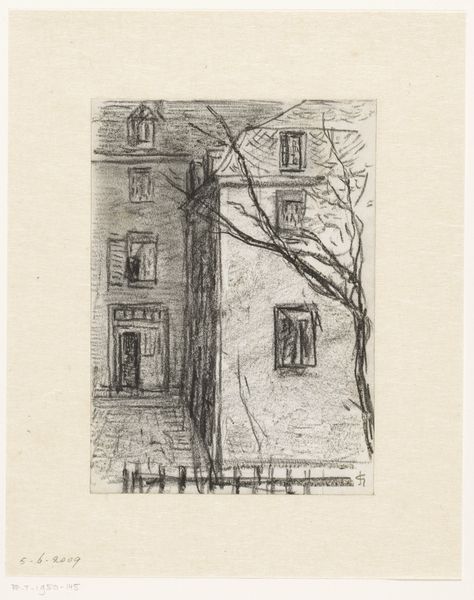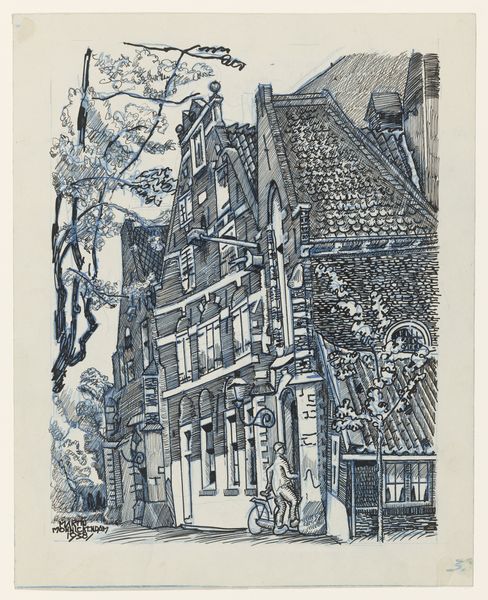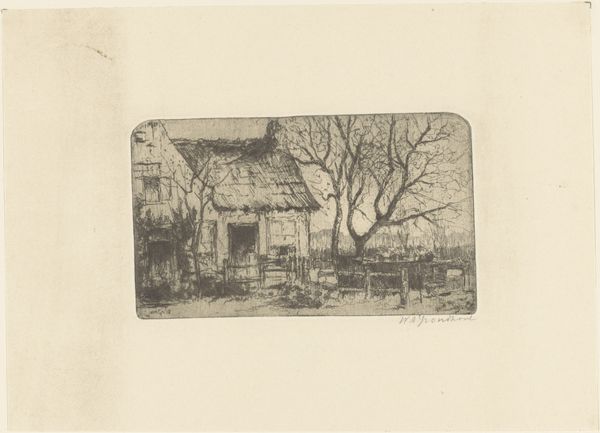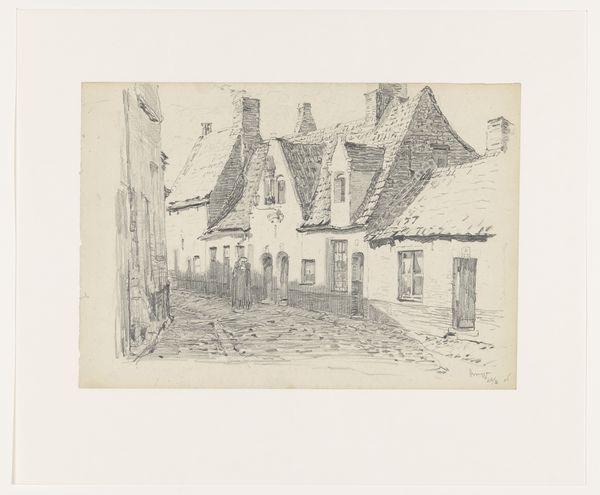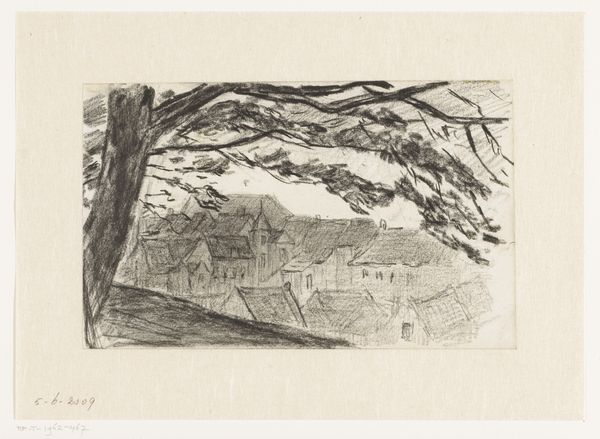
drawing, print, etching, ink
#
drawing
#
ink drawing
# print
#
etching
#
landscape
#
etching
#
ink
#
cityscape
Dimensions: height 184 mm, width 245 mm
Copyright: Rijks Museum: Open Domain
Curator: Here we have Théodore Joseph Cleynhens' "Hof van het Sint-Anna hospitium te Antwerpen," created sometime between 1851 and 1909. It’s an etching, with ink on paper, capturing a cityscape. What strikes you first? Editor: The texture. The etching technique renders this remarkable granularity—an almost tangible feeling of aged brick and stone. Curator: Exactly! Cleynhens uses line and hatching masterfully. Think about the labour invested in each of those tiny strokes to evoke the physical reality of the almshouse. We can also consider the economic context, where printmaking enabled the circulation of these cityscapes to a broader audience, democratising access to art. Editor: Certainly, the meticulous layering creates a sense of depth, especially with how light and shadow play across the buildings' facades. Notice how your eye is led through the composition along the receding street. The tonal contrasts achieve a sense of depth with an intricate series of diagonal lines to add to the forms. Curator: Yes, and observe the figures—perhaps residents or workers—their presence rooted within that social system of care, central to urban life at that time. Consider how this imagery reinforces the place of these figures and their placement within the building's overall material footprint, where both would cease to function in the other's absence. Editor: The framing is interesting, too, how the trees on the right create a screen—softening the geometric forms and preventing a cluttered field of architectural forms. It is quite visually satisfying as a completed artistic work. Curator: For sure! But more than an appealing aesthetic experience, it also acts as documentation, recording the urban fabric and daily lives of its inhabitants within this complex and rapidly modernizing metropolis. Editor: I find myself drawn to the interplay between architectural rigidity and the organic irregularity of the natural elements within the frame—an equilibrium captured across ink. Curator: By examining the material history of this work and considering its place within broader networks of social and economic meaning, it reveals not just what we see but the underlying infrastructure of everyday existence and representation. Editor: Well, I appreciate it at the visual and aesthetic levels—the pleasing composition, depth of field, and evocation of age all serve the composition with expert detail. Curator: An insightful journey through line, place, and time, would you agree? Editor: Agreed!
Comments
No comments
Be the first to comment and join the conversation on the ultimate creative platform.

